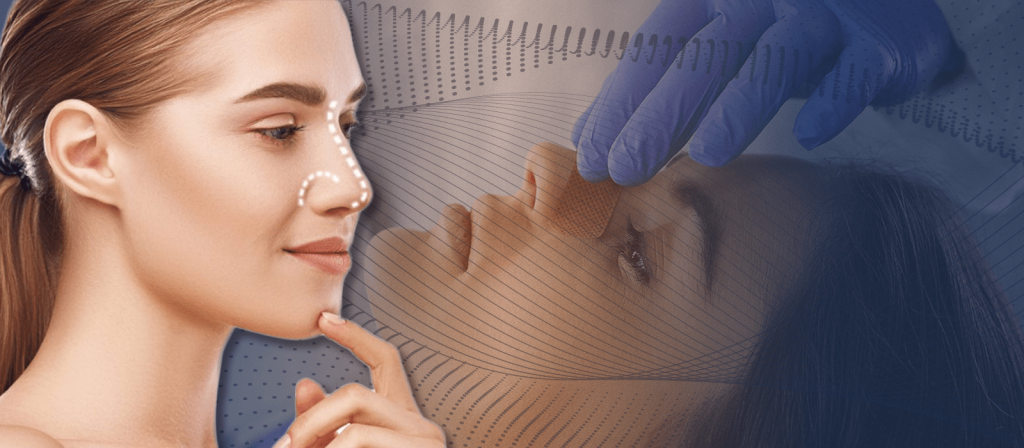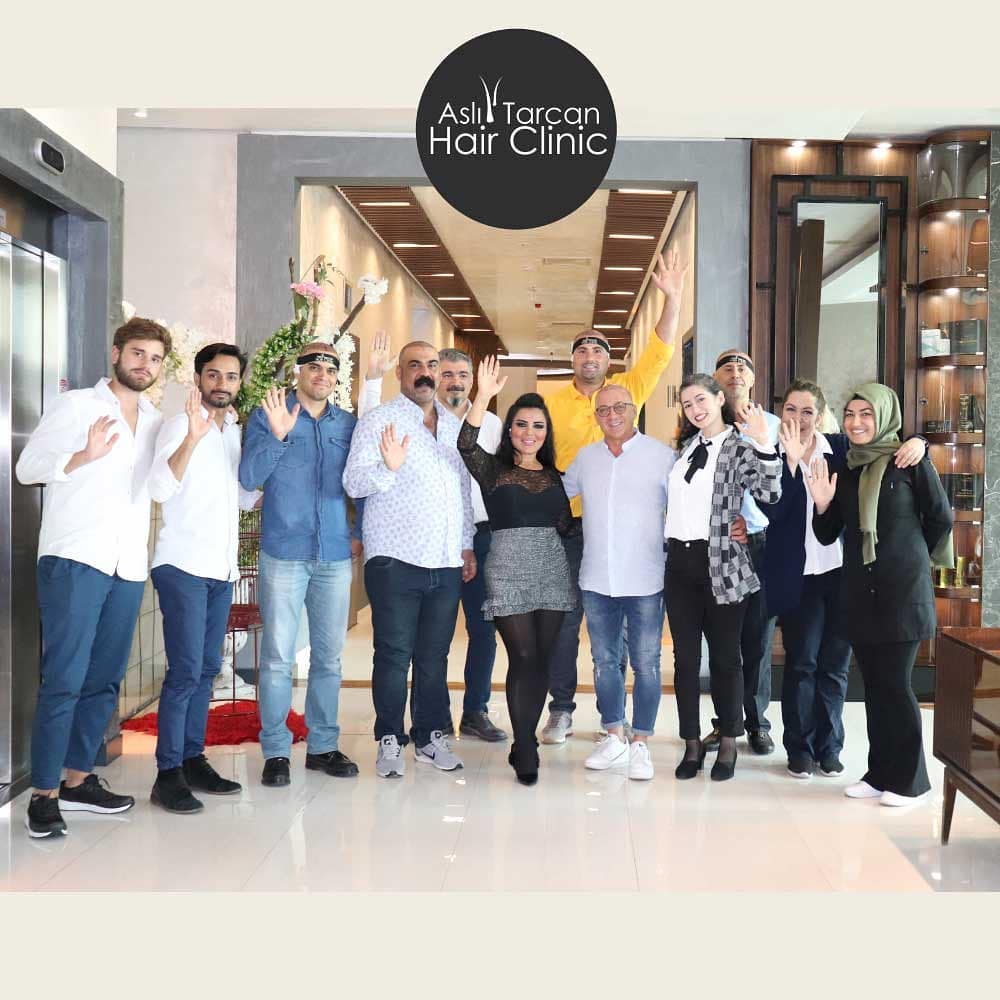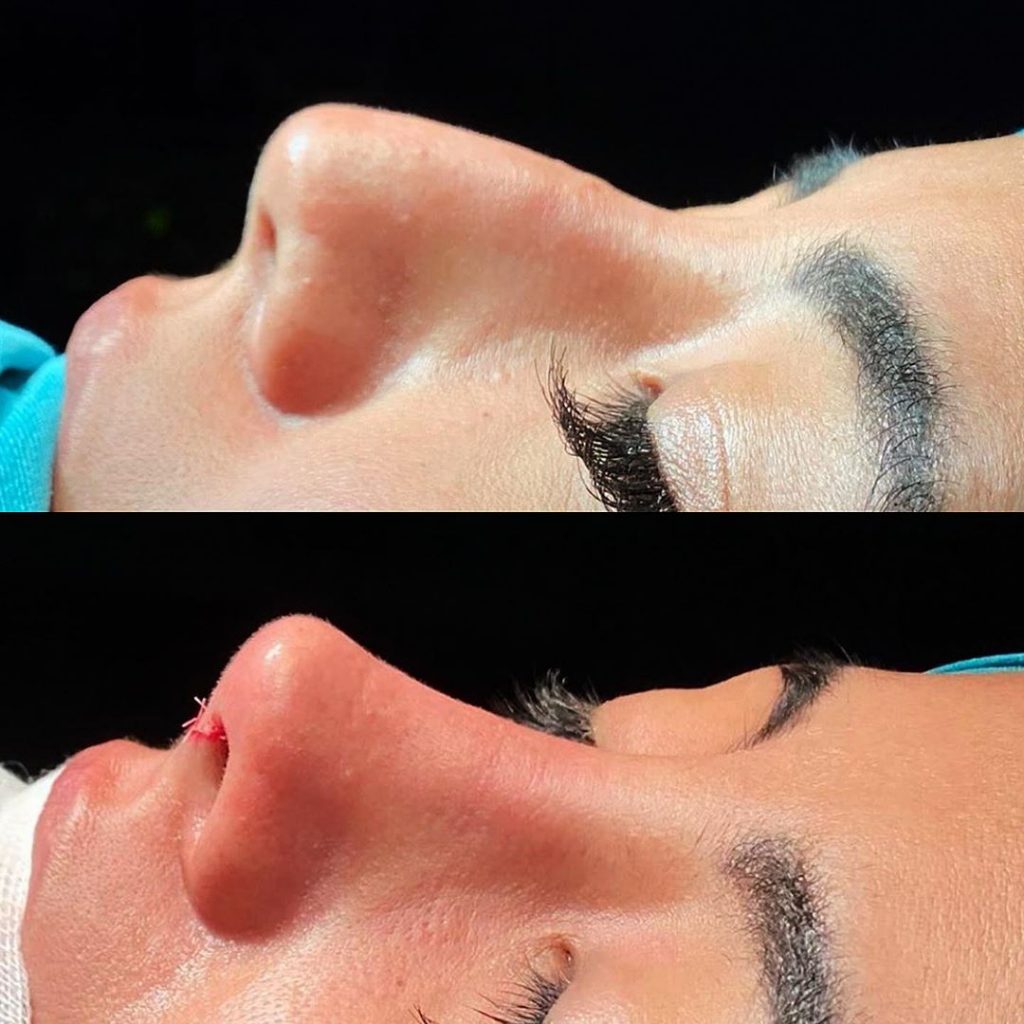
Each passing day, the perception of beauty imposed by society is affecting people even more. As a result of this, most people turn to some solutions that will not only make them look better but also be accepted by a certain group of people. One of the most popular ones of such solutions is cosmetic surgery, especially rhinoplasty operation.
Rhinoplasty, which is mostly referred to as the aesthetic nose surgery, or nose shaping is simply a procedure of correcting nasal appearance by reshaping nasal bone and cartilage. The motivations for rhinoplasty operations are to enhance the facial harmony by making the nose aesthetically fit the other properties of the face and correct breathing problems caused by structural defects in the nose. Thanks to rhinoplasty, you can adjust the position of the nostrils, and treat nasal tip that is enlarged or bulbous, drooping, upturned, or hooked. It is also possible to get a nasal asymmetry.


To be eligible for rhinoplasty, women must be at least 16 years old and the age limitation for men is 17 because it is a challenging operation. The reason for it is that the nose is a complex 3D shape in the face. Modifications made in rhinoplasty operation are usually quite small but these changes can create a significant difference in the way the nose looks and functions. Thanks to this operation, you can develop positive feelings, increase your self-esteem, and also it may contribute to your health greatly.
Before The Operation
Before the rhinoplasty operation, you should depict what precisely you want to change and the nose in your dreams to your expert. You and your doctor must discuss your motivations and expectations. He or she will explain the pros and cons of the rhinoplasty for you and what you are likely to get. It is very important that you are open and transparent with your expert about your expectations from the medical procedure. Before the operation, your surgeon will look into your nose anatomy and other facial features. He will look for your medicinal history including a history of nasal obstruction, and ask you about any current medications or medical conditions. On the off chance that you have a sort of infection, specifically hemophilia, a disorder that leads to excessive bleeding, your surgeon will probably suggest against any elective surgery. Besides, your doctor will perform a physical exam, looking closely at the skin on the inside and outside of your nose to decide what kind of adjustments can be done. Your surgeon may order blood tests or other lab tests. The physical exam helps your doctor figure out what sort of changes can be made and how your physical features, such as the thickness of your skin or the durability of the cartilage at the end of your nose, may influence your outcomes.
The physical exam is also crucial for ascertaining the impact of rhinoplasty on your breathing. Your surgeon will also consider whether any further operation should be performed. For instance, if you have a tiny chin you may also need to get a chin augmentation which is an operation performed to properly define the chin. This is needed because a small chin will create the vision of a larger nose. There may also be some photographing your nose from different angles. Certain photographs of your nose from different angles may be taken. Your consultant may edit the photos to show you what kinds of outcomes are likely for you to get. These shots will be used for evaluating the long-term effects of the surgery and may be referred to during the rhinoplasty operation. After all these processes, your doctor will choose what is best for you according to your cartilage structure, face shape, skin type, and then develop an operation for you.
As with any surgery, rhinoplasty may come with some perils such as bleeding, infection, scarring, discomfort, discoloration, or swelling that may persist, constant numbness in and around your nostrils, difficulty in breathing, a hole in the septum, etc. You may also give an unwanted response to the anesthesia or even need additional surgery. What’s more, the likelihood of an uneven-looking nose exists. So you must first talk to your doctor about how the risks stated above may apply to you before and after the surgery.
During The Operation
Rhinoplasty can be performed in a hospital or a doctor’s clinic. Your doctor will use local anesthesia with sedation or general anesthesia, depending on how complex your surgery is and what your surgeon prefers. If it is a simple procedure you are undergoing, you will be given local anesthesia. Local anesthesia is a kind of narcotic usually given in an outpatient setting. It is limited to a only specific area of one`s body. Your doctor injects a medication that numbs your pain into your nasal tissues and sedates you with medication injected through an IV line. This is done to make you semiconscious.
However, in general anesthesia, you receive the anesthetic drug by inhaling it or through a small tube (IV line) placed in a vein in your hand, neck, or chest. General anesthesia affects your entire body and causes you to be unconscious during surgery. General anesthesia requires a breathing tube. Children are usually preferred to be given general anesthesia. Before the rhinoplasty surgery, you should talk to your doctor about which type of anesthesia will best suit you. Once you are numb or unconscious, the surgeon will make small external cuts aka incision at the base of your nose, between your nostrils.
He will separate your skin from your cartilage or bone and then start reshaping. Your surgeon can change the shape of your nasal bones or cartilage in several ways, depending on how much needs to be removed or added, your nose‘s structure, and available materials. If your new nose needs a small amount of additional cartilage, the surgeon may use cartilage taken from deeper inside your nose or your ear. If more is needed, the surgeon can use cartilage from your rib, implants, or bone from other parts of your body. After these changes are done, the surgeon will place the nose‘s skin and tissue back and stitch the cuts in your nose.
If your septum which is the wall between the two sides of the nose is bent or crooked, the surgeon may also fix it to improve your breathing. The procedure usually lasts for one or two hours. However, if the operation is a complex one, it may take longer hours than expected. After the rhinoplasty surgery, you will be in a recovery room. There, the staff will monitor your return to wakefulness. You will probably be able to leave the hospital later that day but if you have other health-related problems, you may be asked to stay overnight.
After The Operation
After the rhinoplasty surgery, you should rest in bed with your head placed higher to reduce any bleeding or swelling. You may feel like your nose is congested because of swelling or from the splints placed inside your nose during surgery. The splint is placed inside your nose to help it protect its new shape during the healing process. Nose splinter is generally removed after 7 days. In this period, additional bands are applied to the nasal wing for 7 days and after that, these bands are removed. They may also place nasal packs or splints inside your nostrils to stabilize your septum. If tampons are placed inside the nose during the surgery, these tampons are removed after 2 days. The majority of the bruising and swelling after the surgery will disappear after two weeks.
Slight bleeding and drainage of mucus and old blood are common problems for a few days after the rhinoplasty surgery or after removing the dressing. Your doctor may place a drip pad, a small piece of gauze held in place with tape, under your nose to absorb drainage. You can change the gauze in line with the instructions of your doctor. You should not place the drip pad tight against your nose. You should avoid painkillers containing ibuprofen or aspirin (Advil, Motrin IB, others) for 2 weeks before and 2 weeks after your rhinoplasty surgery. Because such medications slow down the blood-clotting process and can make you bleed even more.
You must inform your surgeon about what medications and supplements you are taking so that they can tell you about whether or not to continue taking them. You should only take medications approved or prescribed by your doctor. Also, it is better for you to refrain from certain herbal remedies and over-the-counter supplements. You must quit smoking if you smoke as quitting smoking before and after rhinoplasty surgery helps the healing process a lot. People who smoke have more difficulty healing from rhinoplasty because the nicotine in the cigarettes constricts your blood vessels, resulting in less oxygen and blood getting to healing tissues.
To be more prudent against bleeding or swelling your doctor may ask that you follow some instructions for several weeks after the operation. These may include avoiding intense activities for at least a month, taking baths instead of showers while you have bandages on your nose, eating high-fiber foods such as fruits and vegetables to avoid constipation as constipation can cause you to strain, putting pressure on the surgery site. The surgeon may want you to refrain from extreme facial expressions, such as smiling or laughing, Also you may be asked to brush your teeth gently to limit the movement of your upper lip, wear clothes that fasten in the front to avoid pull clothing over your head. Besides, during that process, it is important to avoid sunlight and any risk factor that has the potential to damage your nose.
You can use SPF 30 or 50 sunscreen, especially on your nose when you are outside. Too much sun may lead to permanent irregular discoloration in your skin. In addition, you should not rest eyeglasses or sunglasses on your nose for at least a month after the rhinoplasty surgery to avoid pressure on your nose. If you are using glasses, contract lens usage is recommended to reduce to load on the nose. You should not put ice or cold packs on your nose after the operation. If you are compatible with such instructions, you will feel progressively better each day during the first week. After surgery, there will be some swelling. The swelling can take several months to fade, although most people do not even notice it after a couple of months. One week after the surgery, people usually feel like they turn back to their old looking and perform most activities. Your nose already changes throughout your life whether you have undergone surgery or not.
For this reason, it is hard to say when will you get the best and final result. However, most of the swelling will be gone within a year. Nearly everyone who has undergone a rhinoplasty surgery has been able to safely leave the hospital the same day after surgery. But in rare cases, you may be asked to stay in the hospital for one night if you have a hard time with nausea or other health problems that need to be monitored.
How Much Does Rhinoplasty Cost?
The cost of a rhinoplasty surgery depends on several factors, including the complexity of the surgery, the surgeon’s training and experience, and geography. In some cases, insurance may pay for a rhinoplasty, but it depends on the insurance policy. Before scheduling your surgery, your doctor’s office will help in getting prior written authorization from your insurance company. Although this is not a guarantee of coverage, it is the only way to confirm that rhinoplasty is a covered benefit. On certain occasions, insurance will pay for a part of nasal surgery, but you must pay for the other parts. It is important that you choose a skilled plastic surgeon for your rhinoplasty operation and feel comfortable with him/her.
It will be best if you find a doctor who is able to explain the process to you in understandable terms. Surgeons with a good reputation among patients and other doctors are generally preferred by most of the patients. You also should make sure that your surgery will be performed in an accredited surgical facility or hospital.


